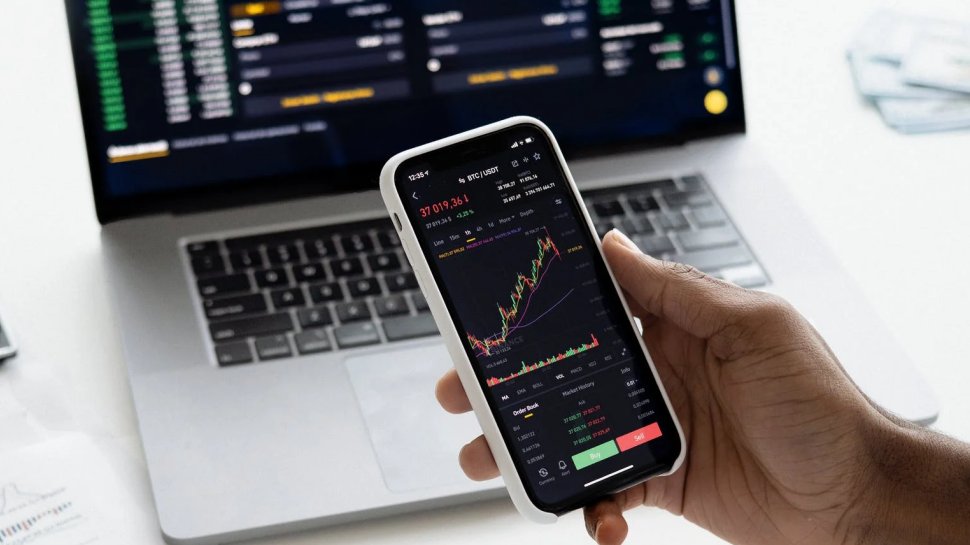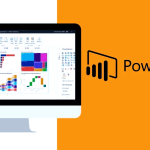
How to Trade Forex on an iPhone
Forex trading, in its simplest form, is buying and selling currencies on the global market. It is one of the world’s most popular and liquid financial markets, with an average daily turnover of over $6 trillion. Many people have succeeded in Forex trading thanks to its diversification, leverage, low expenses, and round-the-clock availability.
Table Of Content
- What Are the Major Currency Pairs and How to Trade Them?
- What Factors Influence the Forex Market, and How Do You Analyze Them?
- Economic data
- Monetary policy
- Geopolitical events
- What Are the Best Times and Strategies for Trading Forex on An iPhone?
- Different Forex Trading Strategies on an iPhone
- Scalping
- Day trading
- Swing trading
- What are the Risks and Rewards of Trading Forex on an iPhone?
- Conclusion
But how can you trade forex on an iPhone? Is it possible to access the same features and tools as on a desktop or laptop? What are the benefits and risks of trading forex on an iPhone? In this article, we will answer these questions and more.
What Are the Major Currency Pairs and How to Trade Them?
The forex market consists of many currency pairs, some more popular and liquid than others. These are called the major currency pairs, and they include:
- EUR/USD: The euro and the US dollar
- USD/JPY: The US dollar and the Japanese yen
- GBP/USD: The British pound and the US dollar
- USD/CHF: The US dollar and the Swiss franc
- AUD/USD: The Australian dollar and the US dollar
- USD/CAD: The US dollar and the Canadian dollar
- NZD/USD: The New Zealand dollar and the US dollar
To trade currency pairs effectively, grasp their quotes and meanings. For instance, EUR/USD at 1.1850 means 1 euro equals 1.1850 US dollars. The first currency is the base, always equal to one unit. The second is the quote, revealing the amount needed to buy one unit of the base currency.
To trade forex on an iPhone, you need to download an iOS trading app to access the forex market.
After that, follow these steps:
- Open an account, fund it, and log in to the app.
- Browse available markets, select a currency pair, and open a trading screen.
- View prices, quotes, spreads, charts, indicators, and order types there.
- To trade, decide to buy or sell and choose the amount (lots/units). One standard lot is equal to 100,000 units of the base currency.
- Set stop-loss and take-profit levels to manage risk and profits.
- Confirm the trade with a swipe or tap. Monitor and manage your positions easily on your iPhone, editing or closing them at any time.
What Factors Influence the Forex Market, and How Do You Analyze Them?
Various factors impacting currency supply and demand influence the dynamic forex market. Some of these factors are:
Economic data
Stats measuring a country’s economy (GDP, inflation, unemployment, etc.) released regularly can impact currency value. Better-than-expected reports boost demand for the currency.
Monetary policy
Actions by central banks controlling the money supply and interest rates affect inflation, growth, and investments, influencing currency value. Rate cuts may lead to depreciation.
Geopolitical events
Political conflicts, crises, or changes in a country or region create uncertainty, aversion, or opportunities, impacting currency value. Wars or attacks may increase demand for safe-haven currencies.
These influences are analyzed using two methods. Fundamental analysis will help understand the economics, politics, and long-term trends that influence market movements. Technical analysis, the second approach, helps in decoding charts and indicators to predict market moves.
A proper blend of both approaches has helped several traders conquer the dynamic forex world.
What Are the Best Times and Strategies for Trading Forex on An iPhone?
The forex market is open 24 hours a day, five days a week. However, not all hours are equally active and volatile. The best times to trade forex on an iPhone depend on your trading style, preferred currency pairs, and time zone.
Generally speaking, there are four main trading sessions in the forex market:
- Sydney session (10 pm to 7 am GMT / 5 pm to 2 am EST): Quiet with low liquidity, focuses on AUD/USD and NZD/USD.
- Tokyo session (12 am to 9 am GMT / 7 pm to 4 am EST): Active with high liquidity, revolves around USD/JPY and EUR/JPY.
- London session (8 a.m. to 5 p.m. GMT / 3 a.m. to 12 p.m. EST): Highly active with abundant liquidity, involves EUR/USD and GBP/USD.
- New York session (1 pm to 10 pm GMT / 8 am to 5 pm EST): Also active with high liquidity, featuring USD/CAD and USD/CHF.
The best times to trade forex on an iPhone are when two or more sessions overlap because they create more trading opportunities and volatility. For example:
- Tokyo-London overlap
- London-New York overlap
- New York-Sydney overlap
Different Forex Trading Strategies on an iPhone
The best ones depend on your trading goals, risk appetite, and time availability. However, some of the most common strategies are:
Scalping
This is fast-paced and short-term, targeting quick profits through small price movements. It requires keen attention, discipline, and quick reflexes and is perfect for risk-takers with ample time and nerves of steel.
Day trading
This capitalizes on daily price fluctuations, where analyzing technicals, trends, and events is crucial. It is ideal for traders with some time to spare and moderate stress.
Swing trading
For patient traders with lower stress and risk tolerance, this long-term strategy holds positions for days or weeks to catch significant price swings and market trends.
What are the Risks and Rewards of Trading Forex on an iPhone?
Trading forex on an iPhone can offer many rewards, such as:
- Convenience: You can trade forex anytime and anywhere using your iPhone.
- Flexibility: Using your iPhone, you can trade forex according to your schedule and preferences like currency pairs, time frames, strategies, indicators, etc.
- Opportunity: You can trade forex in any market condition and take advantage of leverage using your iPhone.
However, trading forex on an iPhone also involves many risks, such as:
- Volatility: Unpredictable market changes beyond control can lead to quick losses.
- Leverage: High leverage allows you to trade with more money than you have, but losses can exceed your account balance.
- Technology: Relying on iPhone tech can lead to network, battery, app, or human errors impacting trading.
Therefore, trading forex on an iPhone requires careful planning, preparation, and execution. You need to educate yourself, practice, and manage your risks well.
Conclusion
Trading forex on an iPhone can be rewarding and exciting, but it also comes with challenges and risks. You need a good trading app, plan, and attitude. Remember that the key to success is to keep learning, practicing, and improving. Embrace the trip, and you’ll soon be able to enjoy the fruitful results and reach your trading goals.






